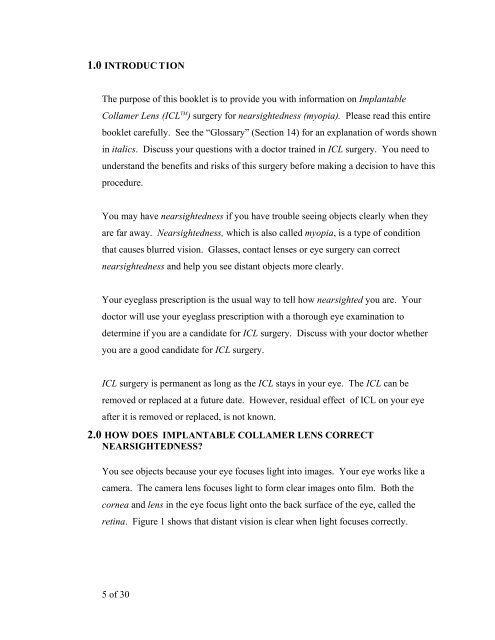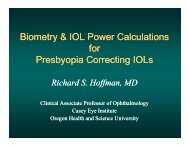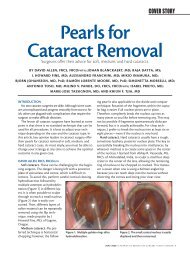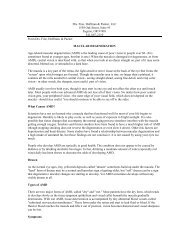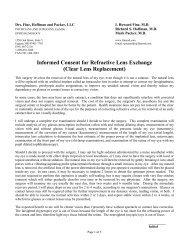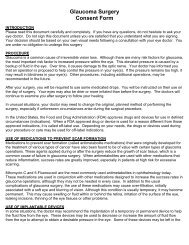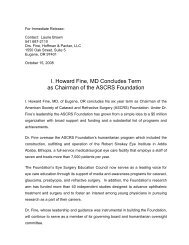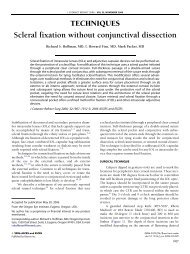ICL Patient Information Booklet
ICL Patient Information Booklet
ICL Patient Information Booklet
You also want an ePaper? Increase the reach of your titles
YUMPU automatically turns print PDFs into web optimized ePapers that Google loves.
1.0 INTRODUC TION<br />
The purpose of this booklet is to provide you with information on Implantable<br />
Collamer Lens (<strong>ICL</strong>TM ) surgery for nearsightedness (myopia). Please read this entire<br />
booklet carefully. See the “Glossary” (Section 14) for an explanation of words shown<br />
in italics. Discuss your questions with a doctor trained in <strong>ICL</strong> surgery. You need to<br />
understand the benefits and risks of this surgery before making a decision to have this<br />
procedure.<br />
You may have nearsightedness if you have trouble seeing objects clearly when they<br />
are far away. Nearsightedness, which is also called myopia, is a type of condition<br />
that causes blurred vision. Glasses, contact lenses or eye surgery can correct<br />
nearsightedness and help you see distant objects more clearly.<br />
Your eyeglass prescription is the usual way to tell how nearsighted you are. Your<br />
doctor will use your eyeglass prescription with a thorough eye examination to<br />
determine if you are a candidate for <strong>ICL</strong> surgery. Discuss with your doctor whether<br />
you are a good candidate for <strong>ICL</strong> surgery.<br />
<strong>ICL</strong> surgery is permanent as long as the <strong>ICL</strong> stays in your eye. The <strong>ICL</strong> can be<br />
removed or replaced at a future date. However, residual effect of <strong>ICL</strong> on your eye<br />
after it is removed or replaced, is not known.<br />
2.0 HOW DOES IMPLANTABLE COLLAMER LENS CORRECT<br />
NEARSIGHTEDNESS?<br />
You see objects because your eye focuses light into images. Your eye works like a<br />
camera. The camera lens focuses light to form clear images onto film. Both the<br />
cornea and lens in the eye focus light onto the back surface of the eye, called the<br />
retina. Figure 1 shows that distant vision is clear when light focuses correctly.<br />
5 of 30


